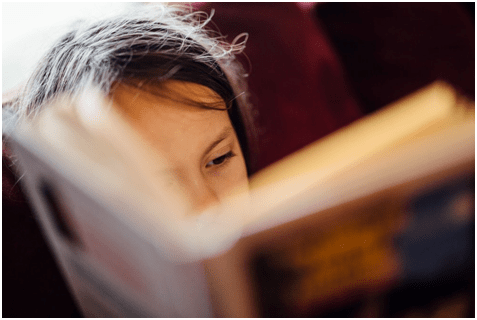For Readers with Dyslexia, Structured Literacy is Essential
Dyslexia, a learning disorder that is neurobiological in origin, is characterized by difficulties with spelling, word recognition, and decoding in reading. Students with dyslexia typically struggle when attempting to learn the phonological component of language and may also experience problems with reading comprehension and an overall aversion to reading that impedes their vocabulary growth. The condition is so pervasive that the month of October is officially recognized as Dyslexia Awareness Month. This past October, a variety of educators, parents, students, and legislators raised awareness by researching and discussing how classrooms can better support students with dyslexia and other language-based reading disorders.

In recognition of Dyslexia Awareness Month, Symone Walker, a federal attorney, public school parent, and Vice President of the Arlington Special Education Advisory Committee (ASEAC) in Arlington, VA, recently wrote on the necessity of structured literacy for students with dyslexia. Walker specifically recommends the Orton-Gillingham (O-G) structured literacy approach: a direct, explicit, multisensory, structured, sequential, diagnostic, and prescriptive way to teach literacy to students who struggle with reading, writing, and spelling. Structured literacy is generally viewed as superior to balanced literacy, which encourages students to use word analogies, pictures, and/or contextual clues to identify words. Balanced literacy has been associated with reading score declines in the Arlington Public School system; moreover, the Lucy Calkins Units of Study, a widely used balanced literacy curriculum, has received an Ed Reports failing review for not meeting expectations for text quality and complexity in grades K-8.
Why Structured Literacy for Dyslexia
For readers of all abilities in grades K-8, O-G and other structured literacy approaches are shown to benefit students and school districts’ long-term education goals. To demonstrate, Walker provides a case study of the Marysville Exempted Village School District (MEVSD) in Ohio, which recently shifted its literacy program to a diagnostic approach that provides equitable access to structured literacy for all students. After assessing the social-emotional wellness of all students - and not just their reading abilities - MEVSD shifted to a diagnostic approach with evidence-based practices in the screening, diagnosis, and treatment of language-based reading disorders. The district financed the shift with a 25-year cost savings of $18,954,434. The continued success of students in this district illustrates the synchrony of social-emotional wellness and reading success, as well as the long-term sustainability of investing in young readers.

To enhance structured literacy approaches for readers with dyslexia, parents and educators may also consider assistive reading technology, as overviewed in our previous newsletter. Tools such as the Voice Dream Reader app, Learning Ally, Bookshare, and Co:Writer - all of which are either free or can be purchased by a student’s school - can help early readers learn the basics of literacy while fostering a long-term appreciation for reading and writing. It is essential that educators and school districts at large recognize, measure, and respond to the diverse needs of all of their students, especially those with dyslexia. Reading can and should be accessible and enjoyable to readers of all abilities - and their access to phonics-based, structured literacy education, informed instructors, and assistive reading technology should reflect this belief.
Take-Aways:
- Students with dyslexia typically struggle with learning the phonological component of language, leading to issues with spelling, decoding, and word recognition. However, these students are just as capable as their peers and can become strong readers with structured literacy education and effective instructors.
- Symone Walker, Vice President of the Arlington Special Education Advisory Committee (ASEAC) in Arlington, VA, recently argued in favor of structured literacy for students in all public school districts. Walker views structured literacy as essential for students with dyslexia and other language-based reading disorders, who require – and deserve – a more explicit, diagnostic, and multisensory method of reading instruction.
- Other school districts may look to the work of Marysville Exempted Village School District (MEVSD) in Ohio for a roadmap on educating students with reading disorders.
- To augment structured literacy education, educators and parents may find additional support from assistive reading technology designed for readers with dyslexia.
Learn More about Reading Teacher:
Reading Teacher access includes 100 animated, interactive stories across 25 different levels. Each story introduces or reviews a new phoneme, new words, and special (high frequency) words.
Each new word throughout the program is then repeated at least five times in the book in which it first appears, and then five more times in the next ten books. Prior to starting each story, children are prompted to select the ‘Listen’ or ‘Read’ option which allows for multiple exposures, experiences, and allows for additional reinforcements of growing skills. Over the course of our program, children will learn over 337 decodable words and gain confidence in their reading abilities. Reading Teacher aligns with the science of reading through a tailored, sequenced approach. Our reading program blends the 5 components of phonemic awareness, phonics, vocabulary, fluency, and comprehension into a simple, straightforward program. Each of the 25 levels of our programs is specifically crafted to build on the previous level's skills to lay the foundation in helping children with various reading abilities meet their unique needs through scaffolding and differentiation.
Start Teaching Reading for Free Now!
Access Level 1’s four interactive stories and the accompanying supplemental resources to teach elementary students how to read. No credit card is needed. Join the 42,635 teachers and students using our reading program.
